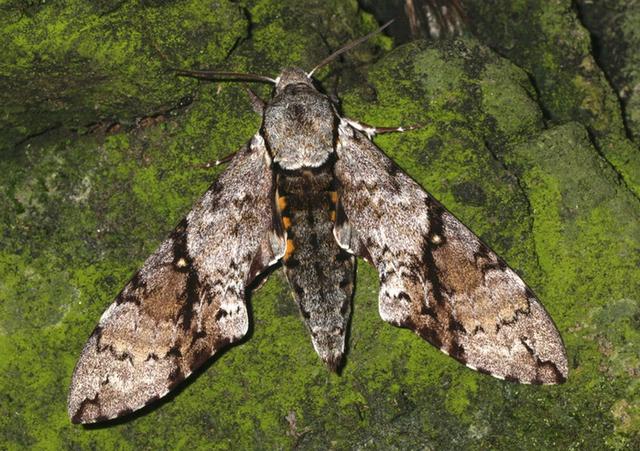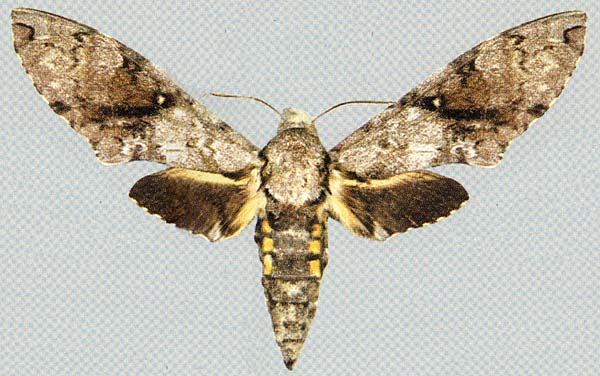Manduca andicola
Manduca andicola
man-DOO-kuhmm an-di-KOH-la
(Rothschild & Jordan, 1916) Protoparce

Manduca
andicola, Shima, Junin, Peru,
June 15, 2010, courtesy of Peter Bruce-Jones.
This site has been created by
Bill Oehlke at oehlkew@islandtelecom.com
Comments, suggestions and/or additional information are welcomed by Bill.
TAXONOMY:
Family: Sphingidae, Latreille, 1802
Subfamily: Sphinginae, Latreille, [1802]
Tribe: Sphingini, Latreille, 1802
Genus: Manduca Hubner, [1807] ...........
Species: andicola (Rothschild & Jordan, 1916)
|
MIDI MUSIC
.....It's a Wonderful World.....
copyright C. Odenkirk
ON.OFF
<bgsound src="world.mid" LOOP=FOREVER>
|
DISTRIBUTION:
Manduca andicola
flies in
Peru: Junin;
Ecuador: Zamora (CATE);
Bolivia: (La Paz: Murillo,
Río Zongo, 750m), also in Central America and down to Argentina.
Similar to Manduca lefeburii, Manduca incisa and Manduca jasminearum in having a relatively uniform forewing upperside with a conspicuous,
if rather diffuse, dark band running from about midway along the costa to the outer margin near vein CuA1 and incorporating the discal spot.
Most similar to Manduca incisa from which it may be distinguished by being generally darker, with most black markings either broader or better defined;
abdomen upperside with mesial line broader, but less prominent against the darker background; and by the presence of a discontinuous band composed of
individual arcs and double dots curving from the costa near to the point the radial vein reaches it to become submarginal posterior to the transverse vein.
CATE

Manduca
andicola Peru, courtesy of Vladimir Izersky.
FLIGHT TIMES:
Manduca andicola adults fly as
three generations in the subequatorial zone:
1) December-January;
2) May-June;
3) October.
Females are generally on the wing from
12:20 - 2:30 am, with males flying from 1:00 - 3:30 am.
ECLOSION:
Pupae probably wiggle to surface from
subterranean chambers just prior to eclosion.
SCENTING AND MATING:
Females call in the males with a
pheromone released from a gland at the tip of the
abdomen. Adults take nectar from flowers.
EGGS, LARVAE, PUPAE:
Larvae feed on various plants in the Annonaceae family.
Return to Sphingidae Index
Return to Sphingini Tribe


